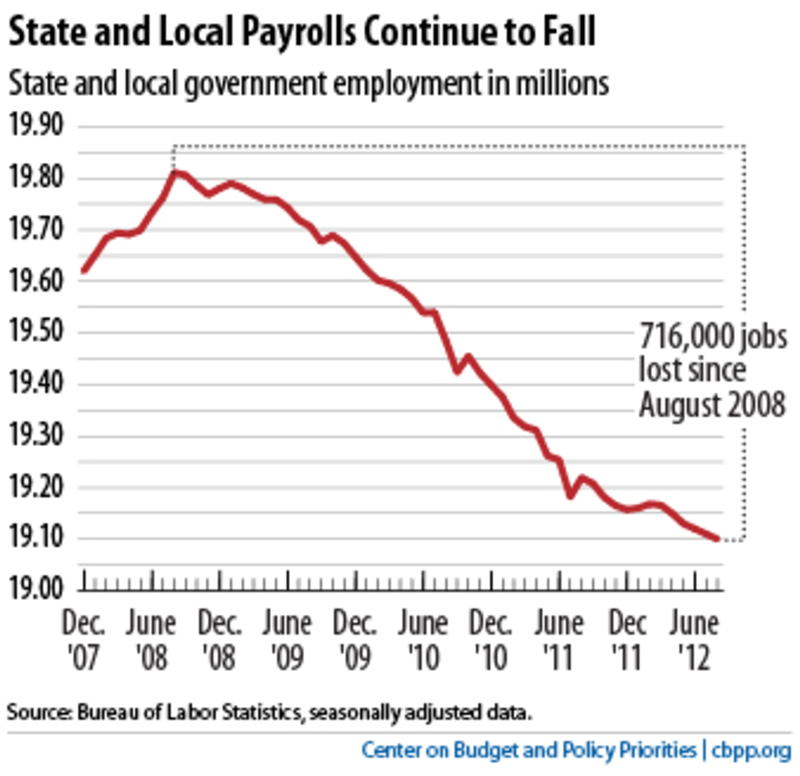The U.S. Bureau of Labor Statistics today released a disappointing job report. Unemployment fell to 8.1 percent in August, and 96,000 jobs were added nationwide. But economists were expecting about 150,000 jobs, and the unemployment rate fell largely due to people giving up on the job hunt, which means they are no longer counted in the labor pool.
One of the reasons for disappointment is the drop in public jobs. People are quick to look at the private sector when these kind of numbers come up, but the public sector employs people, too. And the public sector lost 10,000 jobs at state and local levels, according to today’s jobs report.
That follows the trend of the past few years. The public sector has been doing poorly since the Great Recession started, according to this chart from the Center on Budget and Policy Priorities:
The chart shows state and local payrolls since the beginning of the recession. It proves quite clearly that governments have been making cuts to public jobs.
Ohio has not avoided government job cuts. The Ohio Department of Job and Family Services reported July’s unemployment rate at 7.2 percent, which was unchanged from June’s unemployment rate. The biggest loss in jobs for the month came from government, which lost 5,300 jobs statewide. In comparison to July 2011, July 2012 had 4,400 fewer government jobs.
Instinctively, it makes some sense. As the recession kicks in and families and businesses are forced to budget for lower expectations, it might seem natural to expect the government to do the same.
However, many economists argue it should be the opposite. They say the government should be used to balance out the private sector. In other words, when the private sector is performing poorly — recession — the government should step in to make up for the drop. When the private sector is performing well — boom — the government can relax and run budget surpluses.
Paul Krugman, a Nobel-winning economist, has advocated for this approach time and time again. In his New York Times column and blog, Krugman has pushed for more stimulus efforts from the federal government, and he called for a much larger stimulus package than the $787 billion package President Barack Obama signed into law in 2009.
The data seems to support economists calling for more action. Last month, the Brookings Institute conducted a study that found June’s national unemployment rate would be at 7.1 percent if governments hadn’t made cuts.
What this means is if governments truly want to fix the economic crisis, they might want to kick the debt can down the road. But considering many cities and states have constitutional amendments requiring balanced budgets, that might be hard to pull off.


